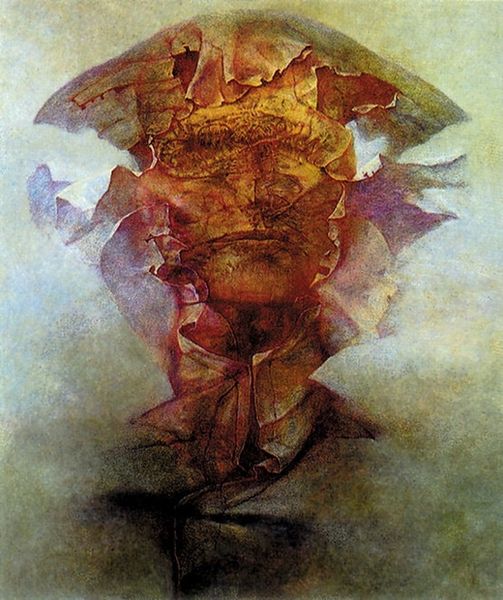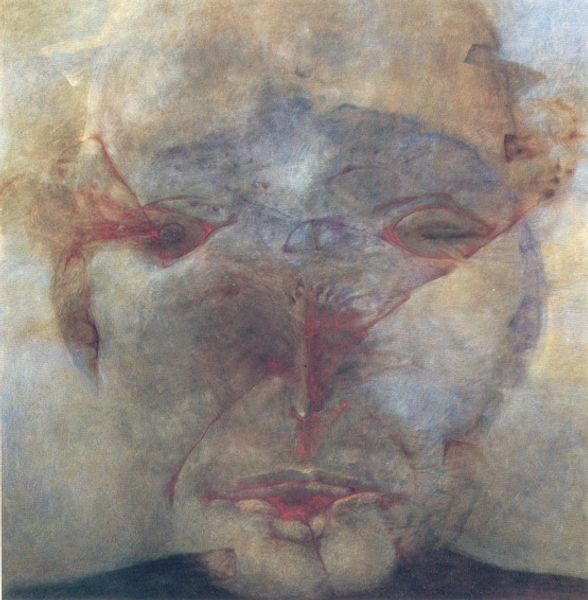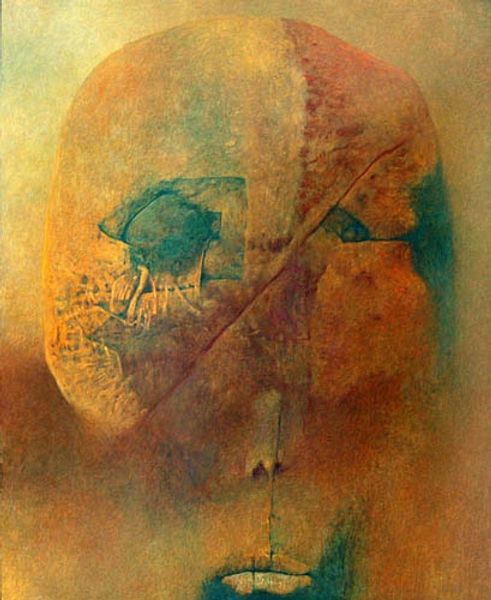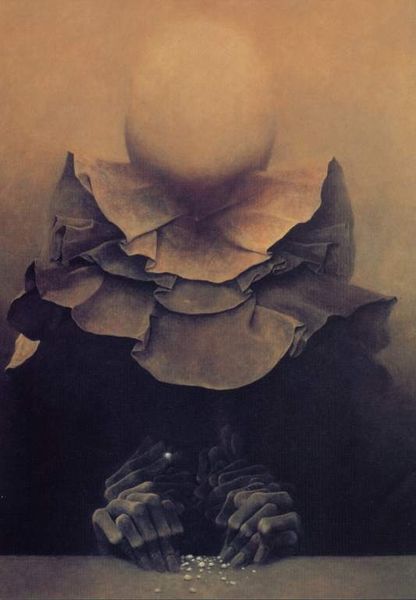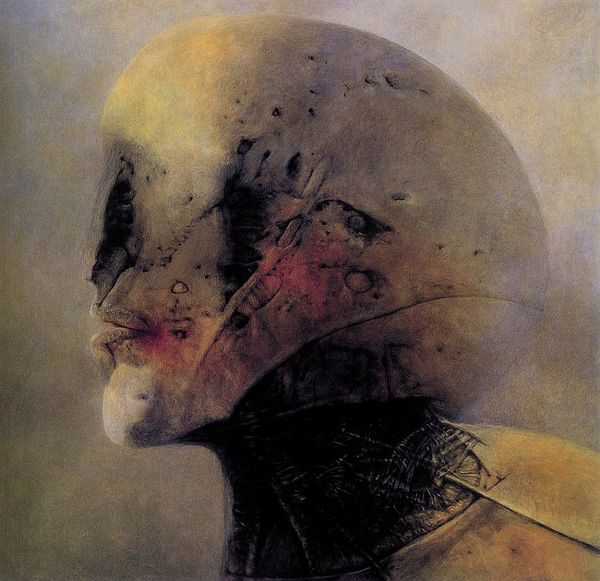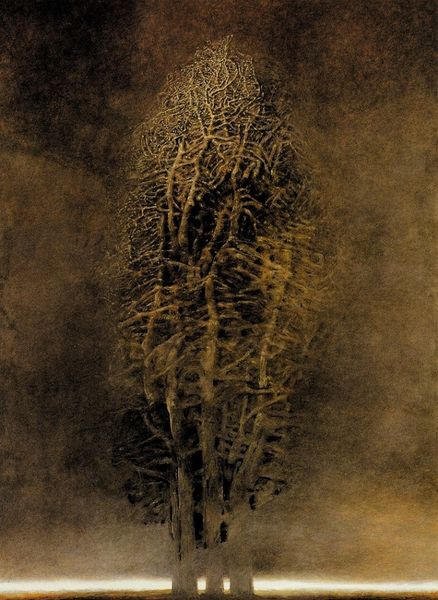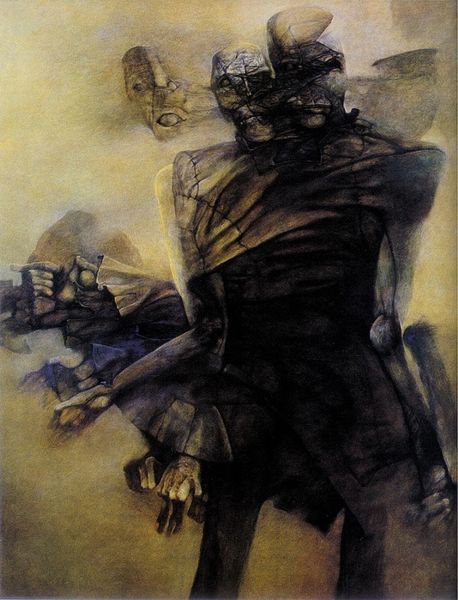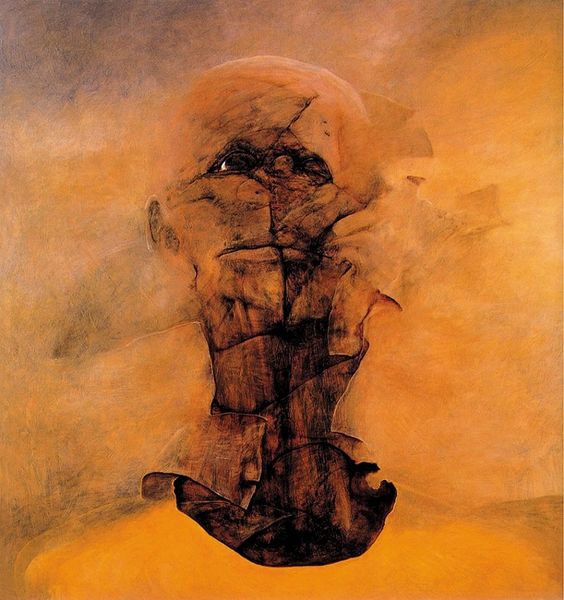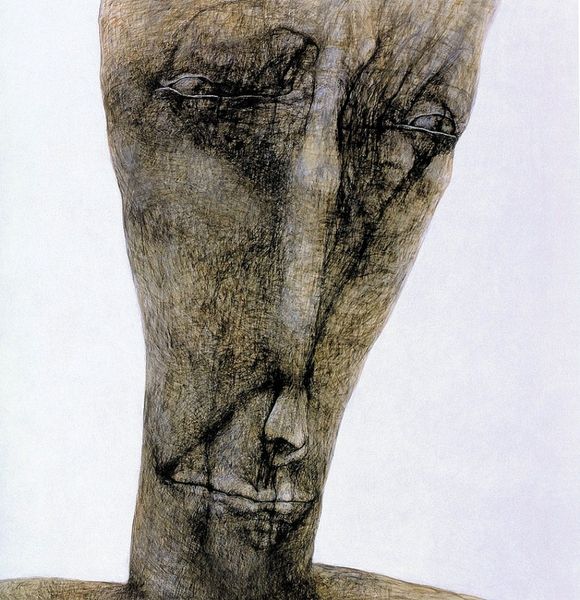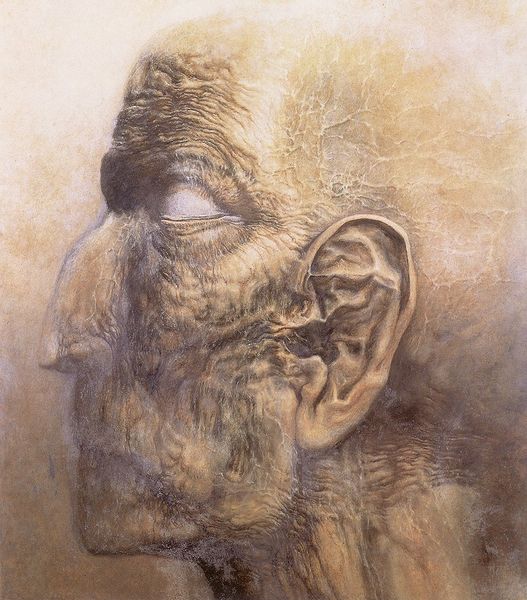
matter-painting, painting, oil-paint
#
portrait
#
abstract painting
#
matter-painting
#
painting
#
oil-paint
#
figuration
#
oil painting
#
neo expressionist
#
neo-expressionism
#
abstraction
Copyright: © The Historical Museum in Sanok (Poland) is the exclusive owner of copyrights of Zdzisław Beksiński's works.
Curator: Initially, this untitled piece by Zdzislaw Beksinski strikes me as profoundly unsettling. The somber hues, particularly the grays and yellows, evoke a sense of decay and anxiety. Editor: The figure seems to emerge from some nether region of the subconscious, doesn't it? The neo-expressionist style is certainly doing a lot of work to expose inner turmoil and distress. Considering Beksinski’s context— living through the horrors of World War II and the subsequent communist regime in Poland—how much do you think the sociopolitical trauma informed the raw, brutal honesty present here? Curator: Undoubtedly, the social climate impacted Beksinski, informing not just the thematic content, but perhaps also his artistic choices themselves. Looking closer at the "matter-painting" approach—the heavy use of impasto oil paint —you can almost feel a buildup of anguish being expressed materially. What visual elements contribute to the mood for you? Editor: The darkness coalescing around the face feels crucial. See how it seems to disintegrate as it moves inward? It calls into question our assumed, fixed notions of the individual. This also works well with the smooth texture surrounding the central figure. I am immediately wondering whether there is any kind of contrast between decay and regeneration here. Curator: Beksinski’s world was one filled with violence, fear, and pervasive control. Therefore, this abstracted, near-deconstructed representation of the human figure embodies this existential questioning—one grappling with a loss of control over body, mind, and identity under immense oppression. It speaks to a deeper critique of power, doesn’t it? Editor: It undeniably echoes humanity grappling with historical atrocities. The tension is heightened as Beksinski never provided interpretations, which renders a wide variety of experiences and emotional processing. He never gives a specific lens or a clear answer. Curator: Ultimately, the universality of suffering allows his artwork to act as a site of discourse, of contemplation for historical events that, I am afraid, might easily be repeated. Editor: Indeed, considering this work now, one must question how art can help expose and even disrupt a political machine designed to suffocate dissent and human autonomy.
Comments
No comments
Be the first to comment and join the conversation on the ultimate creative platform.
